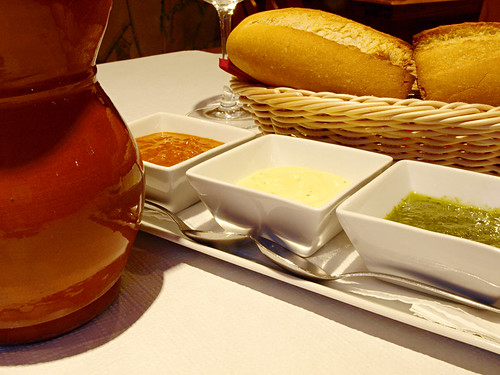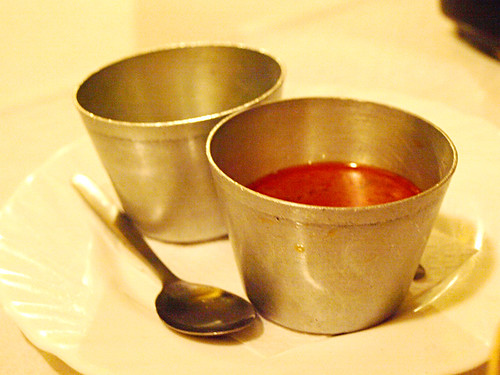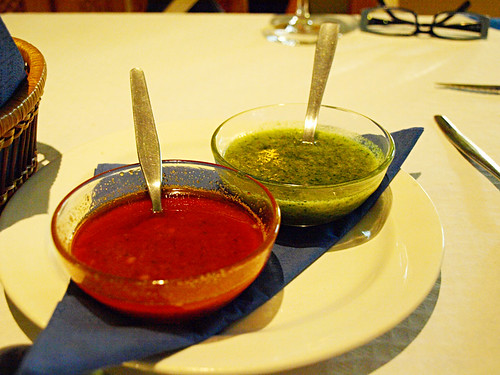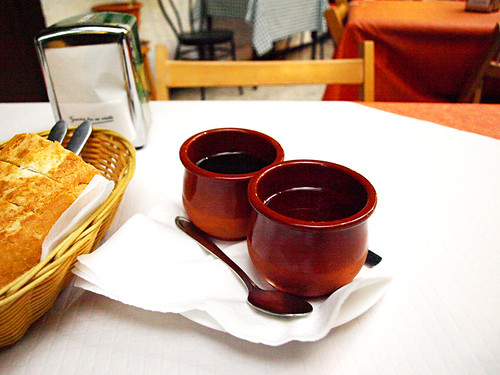I’ve eaten them more times than I can remember; so many times in fact that the act of spreading the rich red or glistening green paste on the obligatory bread in Canarian restaurants has become an almost subconscious semi-automated act.
So, when the neat little tray of mojo verde, mojo rojo and alioli was plonked on the table in El Carraca restaurant in Vallehermoso on La Gomera, I slapped a generous amount of mojo rojo on a chunk of bread and popped it into my mouth.

Seconds later the top of my head turned into a train whistle and steam hissed out of my ears in the best cartoon fashion. This was a mojo with a seriously provocative attitude.
Mojos are oily, thick sauces that accompany almost every traditional Canarian meal, usually with a bowl of papas arrugadas (salty wrinkled potatoes that are a Canarian speciality) or as an appetiser with bread. They tend to come in two colours – verde (green) and rojo (red) – but although the colours remain the same, the flavours can vary quite substantially.
The main ingredient in mojo verde is usually cilantro (coriander) but in some cases it can be parsley or even green peppers. Mojo rojos tend to involve red chillies and paprika. Most mojos have a base of garlic, cumin, olive oil and vinegar but after that the remaining ‘secret’ ingredients are down to each individual abuela’s recipe (it’s always the abuela’s recipe).
The mojos I’ve tried in Tenerife and other Canary Islands have generally been mildly spicy at best which is why the Gomeran one had the effect of someone jumping out from behind a tree on a dark, misty night and shouting ‘BOO’.
It was hot… but it was also addictively good with a deep, rich savoury flavour. Although my tongue and tastebuds begged for mercy, I ignored their pleas and finished the lot.
The next night at Agana restaurant, also in Vallehermoso, provided further evidence that the Gomerans liked their mojo rojo to pack a punch, and then maybe a drop kick or two. This time the vibrant coloured sauces came in what looked like miniature buckets (presumably anything other than steel would have immediately corroded). Normally mojo rojo is a sort of romesco sauce colour. These Gomeran mojos were darker, like burnt embers on a fire. These are serious mojos for grown ups.
My next encounter with La Gomera’s fiery rojos came a couple of days later in Hermigua at Las Chácaras where the ebullient owner Cesár boasted that his was the hottest mojo rojo in all the Canary Islands.
My final run in with Gomeran mojos came at the quirky Restaurant Victor in San Sebastián which was also a pensión and where ‘Victor’ sat on his bed in a room off the courtyard dining room, rousing himself whenever one of the rest of the family needed assistance in the kitchen. Victor’s mojos were so dark in appearance that it was difficult to tell which was the rojo and which was the verde… until I tasted them and the verde’s peppery cilantro announced itself with mucho gusto whilst the rojo screamed around the roof of my mouth like a wall-of-death motorbike rider.
Up until I’d been acquainted with La Gomera’s mojos I’ve always thought of them as simply a pleasant way to start a Canarian meal; to get the juices flowing and all that. On La Gomera I enjoyed them so much that I found myself becoming mildly addicted, even to the point of being gutted when a restaurant didn’t produce the mojo goods at the start of the meal. They are that good.
So which was the best? It was a hard call but I’d have to go for Cesár’s at Las Chácaras in Hermigua. Possibly not the hottest in the Canary Islands as claimed but a sublime blend of perky, tingly spices and rich savoury flavours – all in all, a killer of a mojo rojo.







Be the first to comment